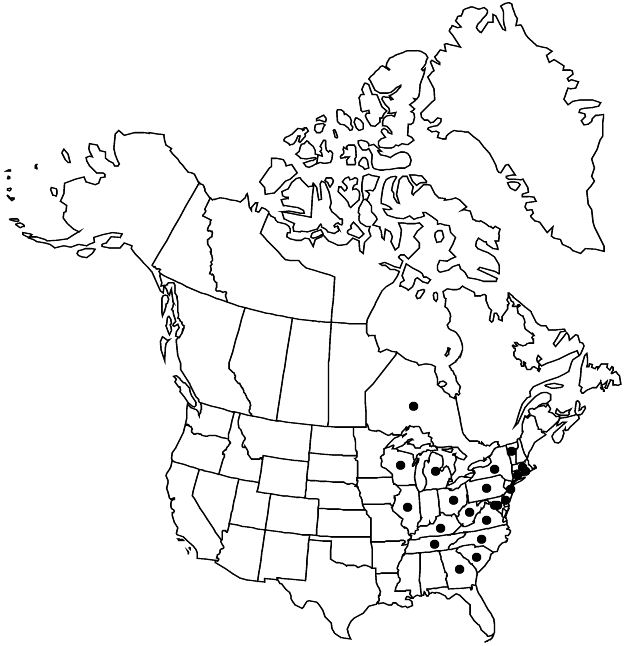Viola subsinuata
Pittonia 4: 4. 1899.
Plants perennial, acaulescent, not stoloniferous, 10–30 cm; rhizome thick, fleshy. Leaves basal, 2–11, ascending to erect; stipules linearlanceolate, margins entire, apex acute; petiole 5–25 cm, glabrous or pubescent; mid-season leaf-blades incised or lobed throughout, earliest leaf-blades lobed (plants homophyllous), similar to mid-season blades, blade 5–9 (–16) -lobed, sinuses usually narrower, shallower toward leaf base, middle and lateral blade lobes differ in width and/or shape, middle lobes narrowly deltate to narrowly elliptic, lateral lobes narrowly elliptic, lanceolate, or falcate, 1–11 × 1–12 cm, base truncate to cordate, margins entire or crenate, ciliate or eciliate, apex acute, mucronulate, surfaces usually pubescent throughout or on veins. Peduncles 5–15 cm, glabrous or pubescent. Flowers: sepals lanceolate to ovate, margins ciliate or eciliate, auricles 1–2 mm; petals light to dark blue-violet on both surfaces, lower 3 and upper 2 sometimes purple-veined, lateral 2 bearded, lowest sometimes bearded, 15–25 mm, spur color same as petals, gibbous, 2–3 mm; style head beardless; cleistogamous flowers on prostrate to ascending peduncles. Capsules ellipsoid, 8–12 mm, glabrous. Seeds beige, mottled to bronze, 1.5–2.5 mm. 2n = 54.
Phenology: Flowering Apr–Jun.
Habitat: Rich woods
Elevation: 100–3000 m
Distribution

Ont., Conn., Del., D.C., Ga., Ill., Ky., Md., Mass., Mich., N.J., N.Y., N.C., Ohio, Pa., R.I., S.C., Tenn., Vt., Va., W.Va., Wis.
Discussion
L. E. McKinney (1992) described the misconceptions surrounding Viola subsinuata that many came to think of as the heterophyllous V. palmata, whereas V. subsinuata is homophyllous. As E. Brainerd (1910, 1921) pointed out, heterophylly versus homophylly is an important and steadfast character difference in acaulescent Viola species. N. L. Gil-Ad (1997) chose not to recognize V. subsinuata, suggesting that it represented a hybrid or introgressant. H. E. Ballard (2000) and A. Haines (2011) both recognized V. subsinuata as a species.
Viola subsinuata is a state historical species in Rhode Island, where it was last documented in 1941 (R. W. Enser, http://rinhs.org/wp-content/uploads/ri_rare_plants_2007.pdf).
Selected References
None.
Lower Taxa
"thick" is not a number."narrower" is not a number.
